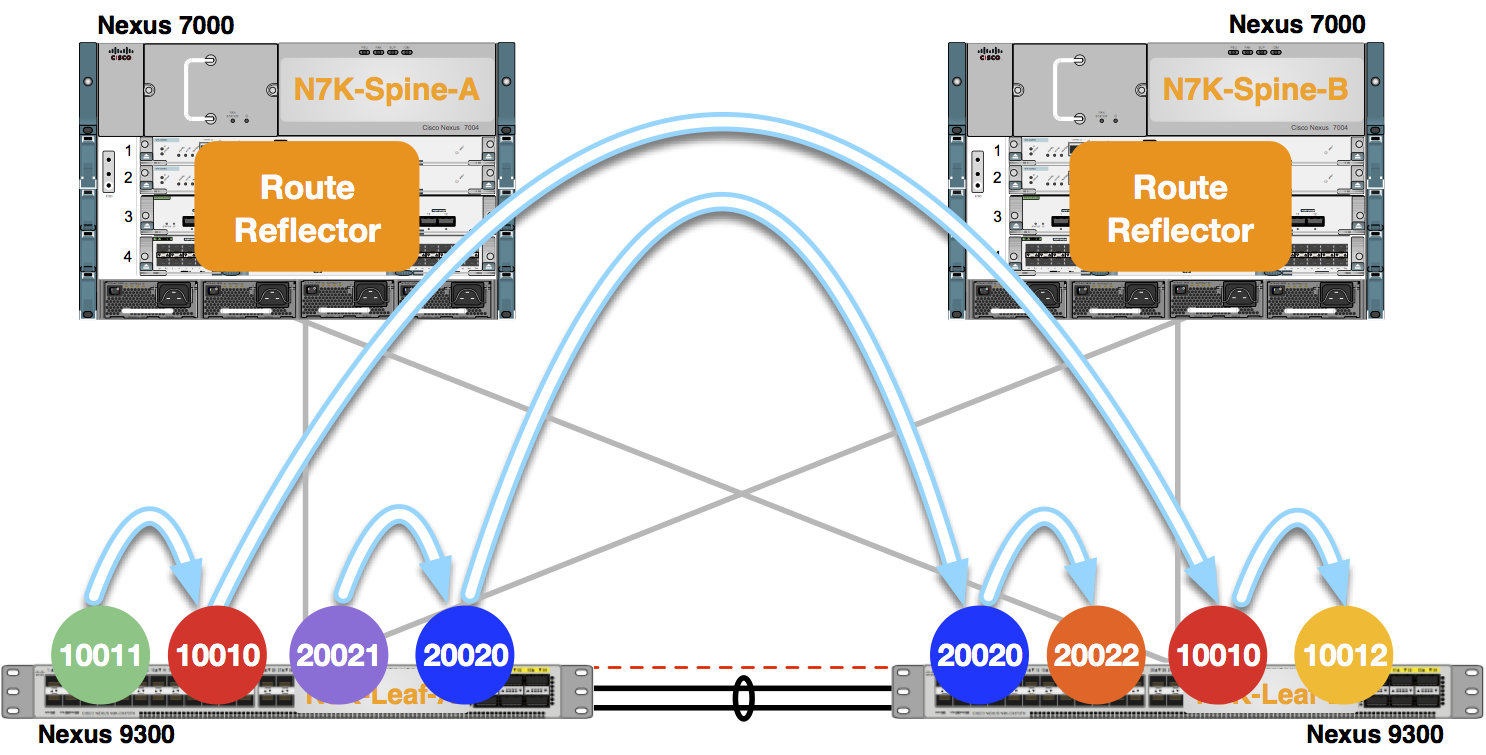Module 6: Configure VXLAN Routing

-
Configure Tenant VRFs for VXLAN Routing and associate to L3 VXLAN VNI.
The configuration of these two Tenant VRFs, tenanat-a and tenant-b, introduces multitenancy.
POD-0-Leaf-:
#Config Block 1
conf
vrf context tenant-a
vni 10010
rd auto
address-family ipv4 unicast
route-target both auto
route-target both auto evpn
vrf context tenant-b
vni 20020
rd auto
address-family ipv4 unicast
route-target both auto
route-target both auto evpn
exit
end
-
Configure the Tenant VRFs under your BGP process:
POD-0-Leaf-:
#Config Block 2
conf
router bgp 65000
vrf tenant-a
address-family ipv4 unicast
advertise l2vpn evpn
vrf tenant-b
address-family ipv4 unicast
advertise l2vpn evpn
exit
end
3. Configure Overlay/L3 SVI for VXLAN Routing.
POD-0-Leaf-:
#Config Block 3
conf
interface vlan 10
vrf member tenant-a
ip forward
no shut
interface vlan 20
vrf member tenant-b
ip forward
no shut
end
4. Configure Host SVI for VXLAN Routing.
POD-0-Leaf-:
#Config Block 4
conf
fabric forwarding anycast-gateway-mac 0000.1234.5678
interface vlan 11
vrf member tenant-a
ip address 10.0.11.1/24
fabric forwarding mode anycast-gateway
no shut
interface vlan 12
vrf member tenant-a
ip address 10.0.12.1/24
fabric forwarding mode anycast-gateway
no shut
interface vlan 21
vrf member tenant-b
ip address 20.0.21.1/24
fabric forwarding mode anycast-gateway
no shut
interface vlan 22
vrf member tenant-b
ip address 20.0.22.1/24
fabric forwarding mode anycast-gateway
no shut
end

